It's been quite evident, since I've been at Sogang, that the teachers really make an effort to not only improve our language skills, but to also help us assimilate progressively and smoothly into Korean daily life. From the way our study materials are structured to opportunities to learn outside of the classroom, such as this past field trip, we become exposed more readily to the culture around us and learn how to deal with certain situations that might arise. At times, I also feel as if I'm learning more about other countries than I am about Korea, due to the significant amount of interaction and sharing with my foreign classmates.
On Saturday, some friends and I spent the day journeying to Ganghwado, an outlying island to the west of Seoul. We took a bus early in the morning and it took about two hours to get to the port at Ganghwado. On this trip, I saw a different color of Korea that I had not seen yet: green. It was definitely a departure from the urbanized city life of Sinchon and Seoul that I have been surrounded by for the past three weeks. As we drove through Ganghwado, we passed miles and miles of rice fields, and the surrounding hills were still and quiet without the reverberation of pop music blasting from cosmetic stores or city lights beaming down from department stores. After reaching the port at Ganghwado, we boarded a ferry to go across to Seokmodo, a smaller outlying island about half a mile away. As we pulled away from the dock, we were immediately bombarded by a ton of seabirds swarming around us. Apparently these birds have become notorious for their raucous frolicking around the ferry, and it is a tradition to feed them when you're crossing to the other island. Fortunately, one of my friends knew of this custom, and brought bags of shrimp chips to feed the birds. The birds would literally come within inches from you in order to snag the food, and they were amazing at catching the chips that we threw! In one of my pictures you can actually see one of the birds about to catch a chip in its mouth! I've also posted a video of this unusual spectacle.
After arriving on Seokmodo island, we had seafood for lunch. From every dish I ate, I had no idea what I was eating. But that was the fun of it. After lunch, we headed for Bomunsa temple, which is located in the back of Seokmodo's mountains. The temple is said to have been constructed by Queen Seondeok in 635 during the Silla Dynasty. It was quite a hike up the steep mountain. Once we reached the site of the temple, there were monks and observers chanting in various parts of the site, including a rock cave filled with lotus lanterns and burning candles. In one temple, there was a giant sleeping Buddha, and in front of the temple stood a massive bell to signal the time for the monks. Further up the mountain from this area was the carving of a sitting image of Buddha on a ten meter high rock. In order to get there, we had to climb and weave up the mountain by stairs and cross a narrow rock platform. To make things a little more difficult, it was completely pouring. Not just when we were ascending the mountain, but the entire day. The rain made for a solemn journey up the mountain to Bomunsa and a cozy bus ride back.
So...on a completely different subject, one that I haven't written about yet but that has been on my mind...about three weeks ago South Korea mourned the death of its former president, Roh Moo-hyun, who jumped off a cliff to his death. He committed suicide only a few days before I arrived in Korea, and I only found out from the driver who picked me up from the airport that the country was in a state of mourning over Roh's death. I knew little of Roh's political history or what his death meant to the country of South Korea. From what I've learned since being here, Roh's death was a great loss to the country, and shifted a negative light onto South Korea's current administration and president, Lee Myung-bak. President Lee is a conservative politician whose hardline policies towards North Korea have really isolated the North and prevented any inter-Korean relations or negotiations from materializing. Roh's policies, on the other hand, promoted dialogue and reconciliation with North Korea when he was in office. Additionally, much of the country blames President Lee and his government for the death of Roh Moo-hyun. These national and political events as well as the North-South relationship are hard to ignore right now, especially with North Korea's recent missile launches, increasing isolation, and secrecy of nuclear development. One of the reasons why this whole situation remains difficult to comprehend is the fact that no one really knows what's going on in the North. Being so close to North Korea is a bit nerve-racking, and has made me remain vigilant of the events that unfold between the two neighboring and polarized countries. Additionally, my home in Hawai'i now seems to be vulnerable to a North Korean attack too, as the North is planning to launch a missile toward Hawai'i in early July.
I actually have a Korean language tutor who recently came back from the military service (two year requirement for all South Korean men), and who has already given some good insight on the current North-South situation as well as how South Koreans feel about it. For me, I never had the burden of worrying about serving in the military after high school. I simply left for college and didn't give military duty a thought. On the contrary, every Korean male is faced with this responsibility that his country requires of him. Often times, college must be put on hold, and academic or other vocational goals must be temporarily halted. My Korean tutor described how students leave the country, many going to the United States, and if they stay there long enough, they lose their Korean citizenship and don't need to serve in the military. While there is still some gray area here, failure to comply with these government requirements of military service most often results in prison. As an American college student, I never had to deal with or worry about this obligation to the military. It was never calculated into my course of action. I feel like I've taken this freedom for granted, and have definitely become more aware of it since being here. It's quite easy to notice the number of young men walking around in military uniforms here.
Alright, to change the subject one more time...the past couple of nights I and another boy living in the same hasukjib helped Nuna (my landlady) move some furniture to the first and second floors of the hasukjib. This was no simple task. We had to move and navigate big, heavy shelves down the stairs to their new rooms. Nuna was glad that she didn't have to do it herself. It was interesting trying to give and follow directions in Korean as to how we were going to manage this transport of furniture. Situations like these are great for learning new vocabulary. For example, I learned the word for "move" (as in moving furniture) and the useful expression/question "힘 안줘?!" (heem ahn ju?!) which literally translates to "are you not giving strength?" or "are you not doing anything?" After we finished, Nuna made us some cold vegetable juice as thanks for our efforts.
























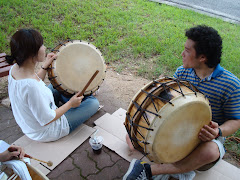







































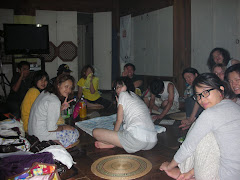










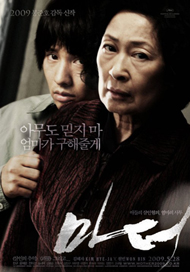


























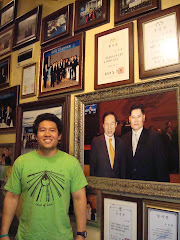
















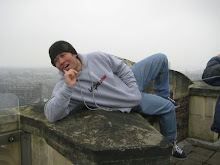
Ganghwado. Ah, thanks for that memory. Watching those birds I was reminded of a funny story about this island:
ReplyDeleteApparently some less than upstanding young men will go on a date to this island and then "forget" that the last ferry leaves at whatever time, which forces the couple to stay overnight on the island. Of course, if even I, a lowly foreigner knew of this trap, surely every Korean girl would?